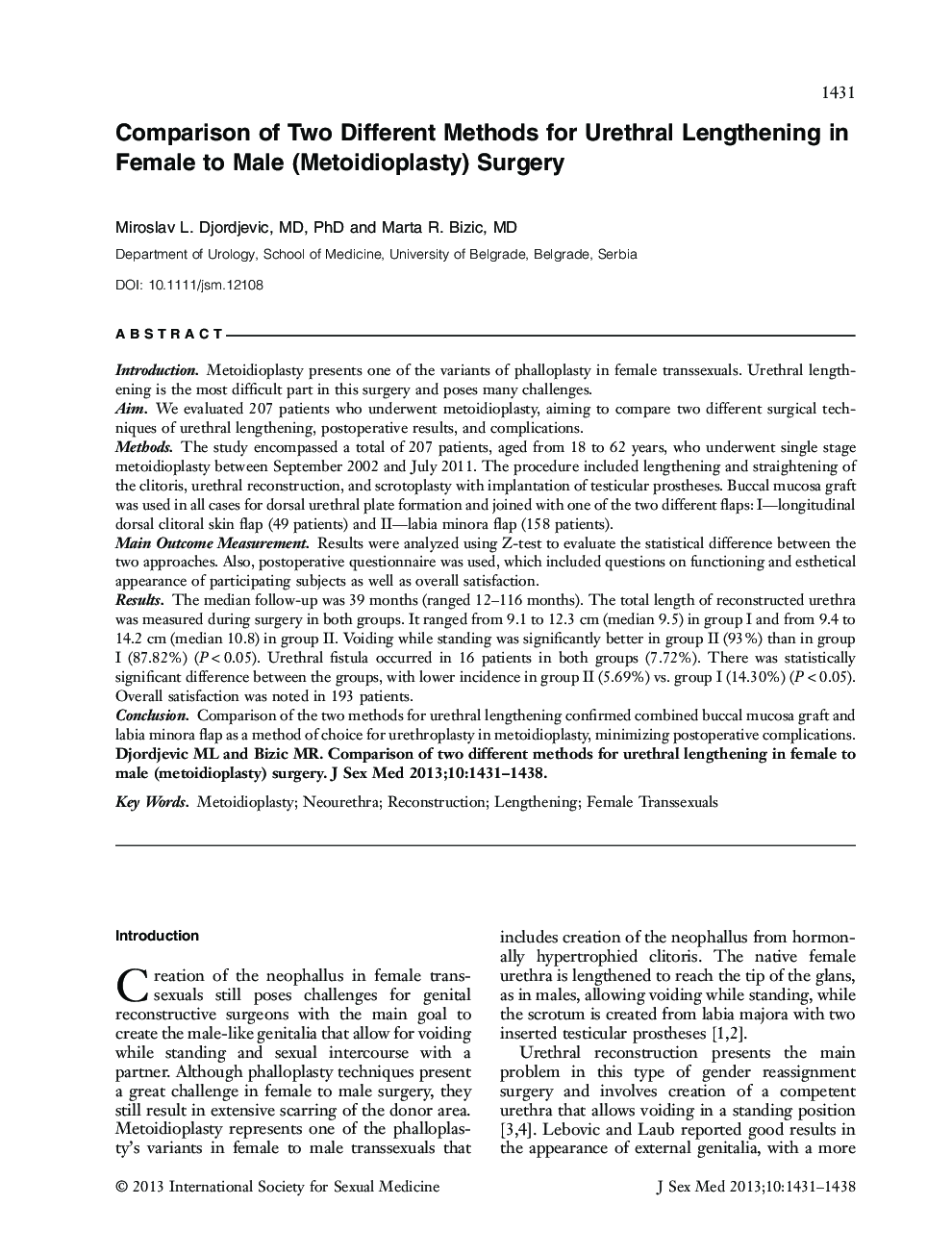| Article ID | Journal | Published Year | Pages | File Type |
|---|---|---|---|---|
| 4270571 | The Journal of Sexual Medicine | 2013 | 8 Pages |
IntroductionMetoidioplasty presents one of the variants of phalloplasty in female transsexuals. Urethral lengthening is the most difficult part in this surgery and poses many challenges.AimWe evaluated 207 patients who underwent metoidioplasty, aiming to compare two different surgical techniques of urethral lengthening, postoperative results, and complications.MethodsThe study encompassed a total of 207 patients, aged from 18 to 62 years, who underwent single stage metoidioplasty between September 2002 and July 2011. The procedure included lengthening and straightening of the clitoris, urethral reconstruction, and scrotoplasty with implantation of testicular prostheses. Buccal mucosa graft was used in all cases for dorsal urethral plate formation and joined with one of the two different flaps: I—longitudinal dorsal clitoral skin flap (49 patients) and II—labia minora flap (158 patients).Main Outcome MeasurementResults were analyzed using Z‐test to evaluate the statistical difference between the two approaches. Also, postoperative questionnaire was used, which included questions on functioning and esthetical appearance of participating subjects as well as overall satisfaction.ResultsThe median follow‐up was 39 months (ranged 12–116 months). The total length of reconstructed urethra was measured during surgery in both groups. It ranged from 9.1 to 12.3 cm (median 9.5) in group I and from 9.4 to 14.2 cm (median 10.8) in group II. Voiding while standing was significantly better in group II (93%) than in group I (87.82%) (P < 0.05). Urethral fistula occurred in 16 patients in both groups (7.72%). There was statistically significant difference between the groups, with lower incidence in group II (5.69%) vs. group I (14.30%) (P < 0.05). Overall satisfaction was noted in 193 patients.ConclusionComparison of the two methods for urethral lengthening confirmed combined buccal mucosa graft and labia minora flap as a method of choice for urethroplasty in metoidioplasty, minimizing postoperative complications.
